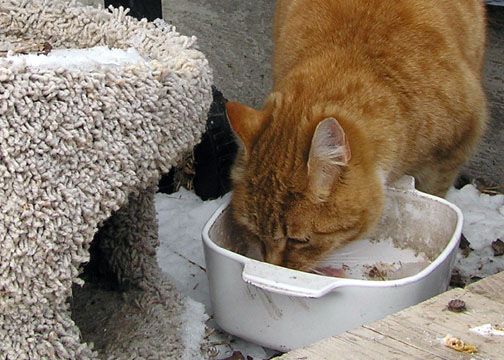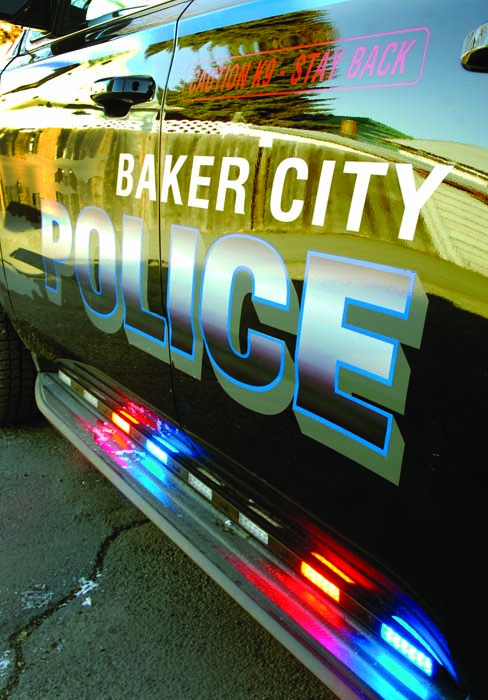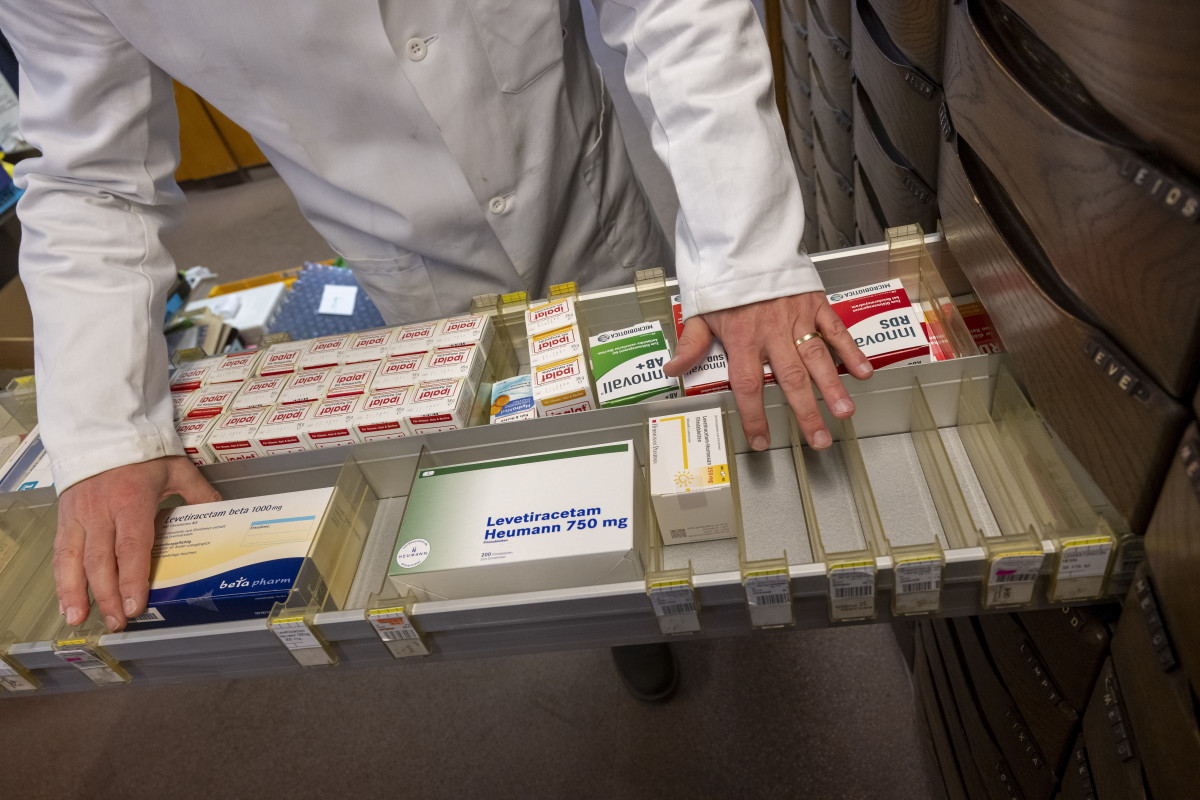When polar air invades, pets need protection
Published 5:14 pm Thursday, December 18, 2008

- Outdoor cats need a plentiful supply of food and water, and a shelter when temperatures plummet. (Baker City Herald/Jayson Jacoby)
Precautions can also prevent problems with your car, home and, of course, you
Trending
Carmen Ott fielded 17 phone calls Tuesday
from folks concerned the dogs next door were suffering from being left
out in the cold.
Trending
But she, as a member of Best Friends of Baker, has no authority to do anything.
“All we can say is please call the police,” Ott said.
Best Friends is the local animal rescue group that provides temporary
foster homes for abandoned cats and dogs until an adoptive family can
be found.
Needless to say, Best Friends members are adamant about the proper care
of animals, especially when temperatures dip below zero as was the case
in Baker City on both Tuesday and Wednesday.
And the polar weather is forecast to persist at least into the middle of next week.
“These animals are going to freeze to death,” Ott said.
Oregon law mandate that owners provide “minimum care” to preserve the
health and well-being of animals regarding access to food, water,
shelter and exercise.
Shelter can be a dog house or a shed that allows the animal to escape
the elements. Ott recommends, for a dog house, facing the entrance
toward a building to keep out the bitter wind.
Straw is the preferred insulator for lining these shelters.
“Blankets really are not good in the winter because they get wet,” Ott said.
Also, water dishes must be protected or heated to keep from freezing. Snow and ice are not acceptable as water sources.
Both straw and the water dishes can be purchased locally.
“Water dishes are on sale all over town,” Ott said.
Ott said Best Friends can help provide straw and doghouses, and has several heated water dishes for loan.
Other ideas for keeping pets comfortable are a heat lamp or heating pads that only warm up when the animal lies on it.
Ott also warns about antifreeze, which can cause kidney failure to animals who lick up the sweet liquid.
Baker Veterinary Hospital also offer these tips for pets:
andbull; Diet: Outdoor pets also need to eat more calories to stay warm when temperatures plunge. That means supplying animals with high quality food that contains adequate protein and extra fat, as well as fresh, warm water throughout the day.
andbull; Shelter: Elevate the floor off the ground to keep cold away, and line with straw or other insulation.
andbull; Decorations: Mistletoe, holly and poinsettia plants are poisonous to animals and should be kept out of reach.
For more information, call a veterinary office.
To get help with straw or a doghouse, call Best Friends at 519-7387.
Of course pets aren’t the only things vulnerable to frigid weather.
Here are some tips to protect your home, your car and, most important of all, yourself:
People
The twin threats most associated with arctic weather are frostbite and hypothermia.
Fortunately, these afflictions share a cure.
The basic idea is that you’ll stay warmer if you wear several thinner garments rather than a single thick one.
The layer closest to your skin should quickly wick away sweat; that is especially important if you’re exercising outdoors. Polypropylene and polyester are excellent choices; cotton is bad.
The outer layer should repel wind and water.
For the in-between layers, don wool, fleece or goose down.
Don’t forget to wear a stocking cap or, warmer still, a ski mask that protects your face. As much as half your body’s heat loss happens at your head.
Mittens, which allow your fingers to share their heat, ward off subzero temperatures better than gloves, which expose each finger, top and bottom, to the frigid air.
Snow, of course, is slippery. Also it tends to turn into ice, which is even more deficient in traction.
Smooth-soled sneakers are a poor option.
You can buy devices that wrap snugly around your shoes and, through metal studs or other means, serve as tire chains for your feet.
A cheaper, though not as effective alternative, is to slip a pair of wool socks or nylons over your boots.
Around the house
To protect your pipes, disconnect hoses from outdoor faucets, install an insulated cover over the faucets, and close foundation vents to prevent chilled air from infiltrating the crawl space.
Although it’s tempting to turn down the thermostat to trim your heating bill, especially when you’re at work and the kids are at school, twisting the dial too far (or more likely these days, tapping the temperature button too many times) can actually inflate rather than deflate your monthly bills.
Furnace experts recommend against lowering the thermostat setting by more than five degrees when you leave.
Here’s why:
The lower you let the temperature fall while you’re gone, the longer the furnace has to run once you get home, muttering about how cold it is out there.
But, you might be saying, isn’t turning the thermostat way down still a more thrifty tactic than setting the thermostat higher and thus requiring the furnace to cycle on more often, even when nobody’s around to enjoy the heat?
The answer is, probably not, if by “way down” you mean more than five degrees or so.
The key here is not how often the furnace turns on and off, but how long it’s actually burning fuel, whether that’s natural gas, electricity or oil.
Experts also suggest homeowners change their furnace filter frequently – as often as once per month during the winter.
A filter clogged with dust can reduce your furnace’s efficiency by as much as 30 percent.
Behind the wheel
Let your car idle for three to five minutes before you drive away in the morning.
This reduces wear on the engine’s internal parts during the period after start-up, when the lubricating oil oozes rather than flows.
Check the fluid in the radiator to be sure it contains enough antifreeze to foil freezing – a 50-50 cocktail will protect down to about 34 below zero.
Don’t overdo the antifreeze, though – a concentration of more than 60 percent antifreeze can make your engine more susceptible to freezing.
Strive to keep your fuel tank close to full. The fuller the tank, the less room there is for air, which can in chilly weather condense into water. Your engine doesn’t want watery gas.
Unless you park on a steep slope, you’ll do well to avoid setting your parking brake at night. The cable that controls the brake can freeze, possibly leaving you stranded.
One more tip for drivers, except this one’s designed to save cats rather than cars:
A cat will on occasionally crawl under a car and snuggle close to the engine, which emits heat for hours after it has been turned off.
To avoid an unpleasant encounter between feline and radiator fan, tap the hood or honk the horn before you twist the key in the morning. The noise ought to dislodge any trespassing cats.









